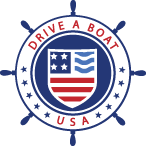What You Need to Know About Using Your Boating License in Another State
For millions of boat owners in the U.S. , obtaining a Boating Safety Education Certificate—often called a Boater Card or “boating license”—is a mandatory rite of passage. But when you plan that exciting out-of-state trip, launching your boat on a new lake or coastal waterway, you may wonder: is my home state’s card valid everywhere else?
The short answer is usually yes, thanks to a principle called reciprocity. However, relying solely on your home card without understanding the local nuances can quickly lead to fines or safety issues.
Key Takeaways
- A boater card is not a license. It is proof that you have successfully completed a boating safety course.
- A NSBLA-approved certification is usually accepted in other states. It may depend how long you are staying (whether you qualify as a visitor, or are considered a new resident).
- Local rules and regulations may differ: always check with local state authorities before taking to the water, to avoid breaking the law and being fined.
Boating certification is not really a “license”
First, let’s clarify what you actually possess. Unlike a driver’s license, the document required by mandatory education states is a “certificate” (sometimes just called a “card”). Your state boater card confirms you have passed a standardized course, proving basic competency in navigation rules and safety protocols. Drive A Boat USA can help you get your certification in New York, California and Florida.
The Gold Standard: NASBLA Approval
The reason your certificate from Florida, New York, or California is accepted in other states (or other parts of the world) is its endorsement by the National Association of State Boating Law Administrators (NASBLA).
The principle of reciprocity
Most U.S. states and territories have a mutual agreement: they recognize a valid Boater Education Certificate issued by any other state, provided the course was NASBLA-approved. Since your state requires a comprehensive, standardized course, your card carries significant weight across the country.
Tip: Always check your certificate or card for the NASBLA logo. This small seal is your assurance that your education meets the recognized national safety standard, making it your “passport” for nearly all recreational waterways.
Using your card when visiting other states
While reciprocity is great, it’s not a permanent exemption. It is generally intended for temporary use by visiting boaters.
The most critical factor is the state’s definition of a “visitor” or “non-resident.”
Do you qualify as a visitor?
If you are traveling for a week-long fishing trip or a two-week vacation, your home state card is almost always accepted.
Problems can arise if you operate your boat in a different state for an extended period, such as a New Yorker spending the entire six-month winter season in a Florida marina. Once you pass the residency threshold—which varies in each state—you may be required to register your vessel and obtain the new state’s physical Boater Card, even if the underlying education requirement is waived.
Mandatory state-specific rules you cannot ignore
Your Boater Card handles the education requirement, but it does not exempt you from the hosting state’s unique operational and equipment regulations.
Before you drop anchor, be sure to verify the following for the specific state where you are boating:
- Minimum age requirements and safety rules for operating a motorized vessel or PWC
- Rules for no-wake zones, hours of operation, and local restrictions (especially for PWCs) including speed limits
- Required boating safety equipment, including life jackets
- Boat pollution laws
Moving permanently to another state
If your plans involve more than just a visit—if you are establishing a new permanent residence—the rules change:
Vessel registration is mandatory
If you move, you must register your vessel in the new state. This is purely administrative and not related to your education card.
Boater Card Documentation
Because your original certificate (from CA, NY, or FL) is NASBLA-approved, you will typically not be required to re-take the entire safety course. However, you may need to:
- Submit your NASBLA certificate as proof of education.
- Apply for the new state’s physical Boater Card (and pay the associated fee) to comply with local enforcement rules.
Check with your local state authorities for details.
Get your state-specific boating certification with Drive A Boat USA
For many people, boating means freedom. Reciprocity rules in the U.S. make it easier to take your safety training with you, wherever you go. But that freedom is conditional on knowing the local rules.
Always check your host state’s official Department of Fish and Wildlife or Parks website to quickly review the laws for non-residents, before taking to the water. It will keep you safe, and avoid paying fines.
Drive A Boat USA offers 100% online state-specific boating courses that will get you certified and ready to go boating safely in New York, Florida and California. Learn about boat navigation rules, boating safety equipment, what to do in an emergency, and more. Sign up today!

